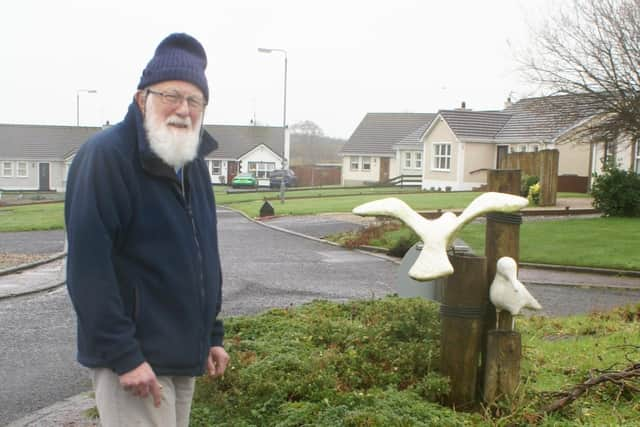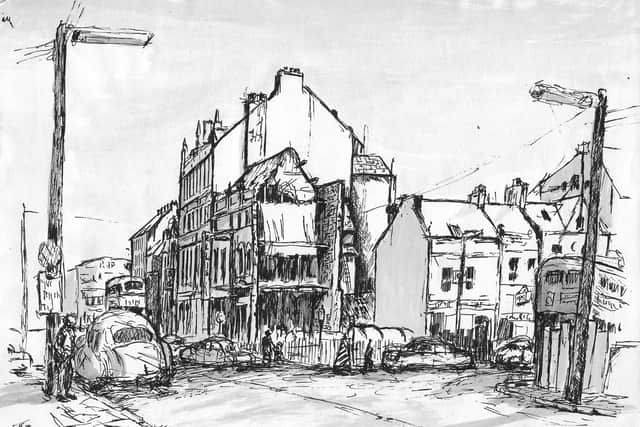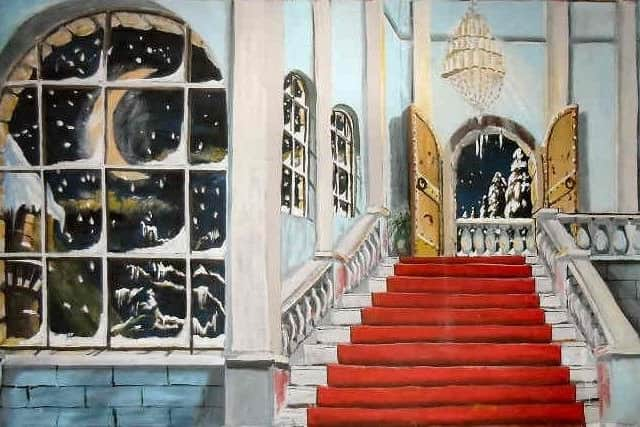Family wore paper hats to stop paint dripping on each other
and live on Freeview channel 276
Many, many Ulster folk have experienced Brian’s ubiquitous creativity - someplace, sometime, somewhere - with more examples here today.
He’s originally from Wimborne in Dorset. Following National Service with the RAF and a short spell with the BBC in London, Brian came to Broadcasting House in Belfast in 1962.
Advertisement
Hide AdAdvertisement
Hide AdHe’d been living with wife Angela and their little son and daughter in a caravan in Winkfield, near Windsor “with no electricity, no toilets, no running water”, Brian told me, adding with characteristic precision, “it was 22 feet long by seven feet six inches wide.”


He travelled to work on a 50cc moped, two hours each way. After renting in Belfast, he purchased a house in Dundonald, another son was born, and Brian’s protracted moped journeys became briefer commutes by trolleybus.
He remembers fellow passengers returning from the Belfast Ropeworks and “the lovely smell of hemp.” He’d been a technical operator in Broadcasting House in London “fading Big Ben in and out” and working with wireless celebrities like Wallace Greenslade and Joy Worth.
Over here he worked with BBC stalwarts like Cicely Matthews and Havelock Nelson “disc cutting and tape editing” he told me, explaining that shellac (resin) recording discs were still in use back then.
Advertisement
Hide AdAdvertisement
Hide AdA colleague told Brian that he played the violin in an orchestra for amateur productions of the Lisnagarvey Operatic Society, near Lisburn. “They’re looking for someone to design and paint the scenery,” his workmate added “would you be interested?”


Brian was, and “that was it,” he said. He’d started painting scenery as a 13-year-old member of a Wimborne drama youth group and resumed three decades later in Lisburn, for Lisnagarvey Operatic Society’s Oklahoma! - the first of five. He worked on another Oklahoma! in Lisburn in 1973, two more in Ballycastle in 1997 and 2005, with his fifth in Newtownabbey’s Theatre at the Mill in 2011.
Whether as designer, builder or painter, and often all three, Brian has worked on an incredible number and variety of productions since his first ‘Oh, What a Beautiful Mornin’.
As well as many dozens of plays, dramas, operas and assorted theatrical performances, he has worked on five different productions of Snow White; four each of Aladdin, The Wizard of Oz and Cinderella; three of Dick Whittington and two each of Ali Baba, Calamity Jane, Jack and the Beanstalk, The Merry Widow and The Sound of Music.
Advertisement
Hide AdAdvertisement
Hide AdHe has been the prime architect of castles, caves, dens and dungeons and single-handedly engineered Doctor Who’s Tardis in 2014, topped with a revolving, flashing, blue light. And sometimes the whole Willis family joined in.


He recalls Lisnagarvey Operatic Society’s painter’s trolley with himself perched on the tallest ladder on the trolley and two Willis children on shorter ladders below him - all painting - with wife Angela and their third child working from the stage floor.
“All of us were wearing paper hats,” Brian told me, beaming at the memory, “because our paint brushes would drip down on whoever was underneath. We started at the left side of the backcloth, moving the trolley across.”
Much of Brian’s substantial drama portfolio came after he retired as a BBC NI Film Sound Recordist in 1988, and in February 1975 he added Ulster Hospital Radio to his ever-burgeoning tally of spare-time activities. Thanks to a small team of professional technicians and broadcasters toiling after hours on “an old, redundant, four-channel Marconi radio desk which we bought for a token sum from the BBC in Belfast,” Brian recounted, Ulster Hospital Radio went on air for the first time on 23rd December 1975.
Advertisement
Hide AdAdvertisement
Hide AdIt was NI’s second hospital radio station as “Ards beat us by a couple of weeks,” Brian smilingly acknowledges. The BBC’s Maurice Shillington guest-presented the debut programme, headlining with the then Secretary of State Merlyn Rees and his wife. A host of ‘lay’ volunteers from virtually all walks of life soon joined his fledgling radio station, and like most everything involving Brian, the rest is history!